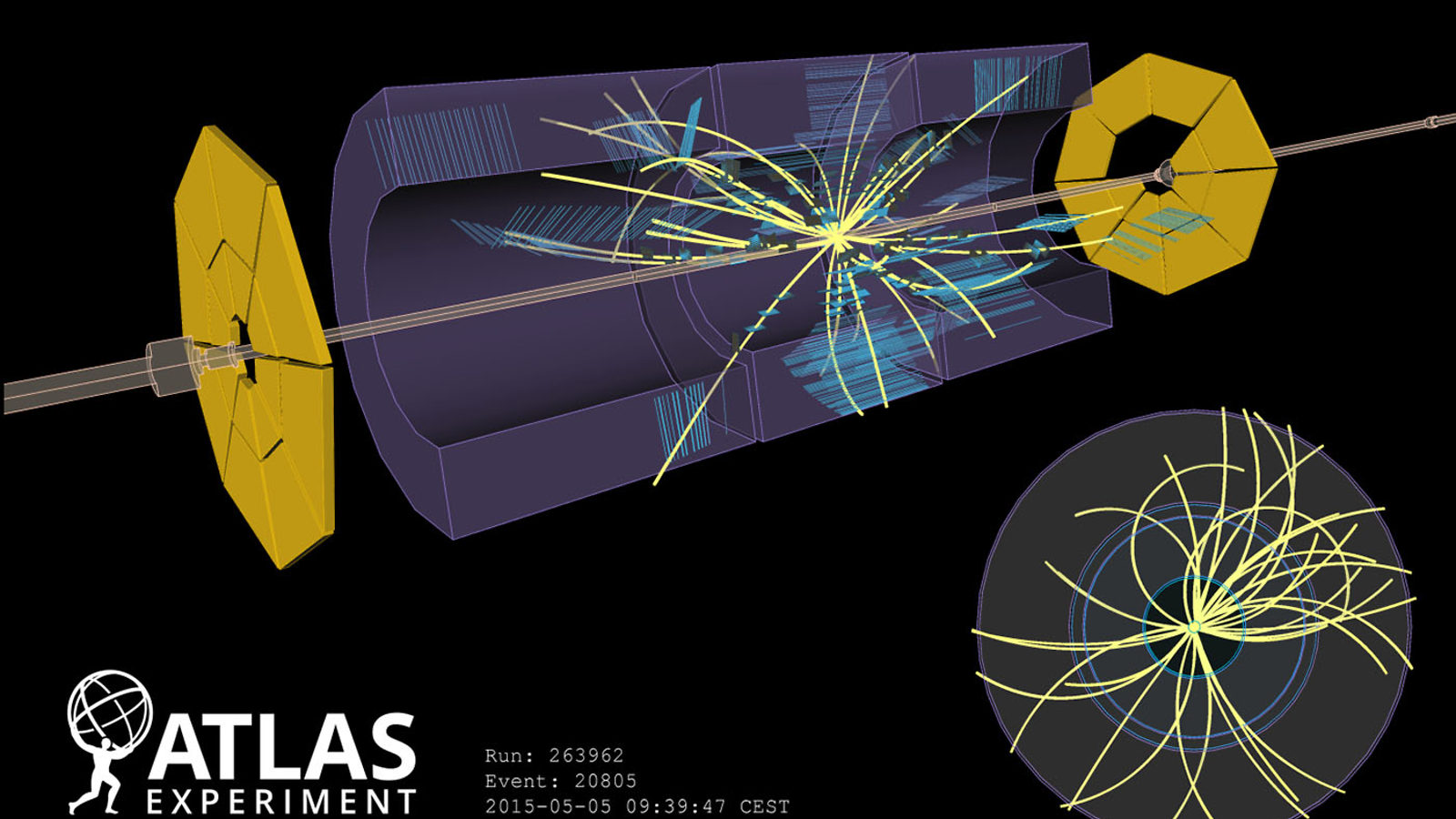Today low-energy protons met in the hearts of the four Large Hadron Collider experiments. These test collisions will help the ALICE, ATLAS, CMS and LHCb collaborations calibrate their detectors in preparation for the high-energy collisions scheduled for early June.
“Our detectors need to be able to distinguish between two particles separated by about the width of a human hair,” says Fermi National Accelerator Laboratory researcher Greg Rakness, run coordinator for the CMS experiment. “We need these low-energy collisions to precisely calibrate our instruments.”
Prior to this, the LHC had been shut down for two years to undergo upgrades and repairs. It circulated its first protons of its second run on April 5.
To generate the test collisions, engineers at CERN first accelerated proton beams inside the Super Proton Synchrotron and then diverted them into the LHC. Once inside the LHC, the two beams rotated at their injection energy of 450 giga-electronvolts before colliding in the centers of the four detectors. Engineers plan to run the two colliding beams for six continuous hours before diverting the leftover protons out of the machine and into a thick column of graphite.
CERN engineers plan to circulate proton beams around the LHC with about 14 times more energy this summer.
The teams responsible for getting the LHC up and running are about halfway through the eight-week period scheduled for commissioning. Over the next few weeks, they will continue to prepare the LHC for standard operation.
Standard operation requires that the LHC can safety and continuously collide hundreds of billions of high-energy protons every 25 nanoseconds for eight to 12 hours a day, almost every day, says LHC lead engineer Giulia Papotti.
“Turning on a particle accelerator that is 27 kilometers long is very different than booting up your computer,” Papotti says. “It takes time, and we still have a number of safety systems we need to set up to protect the machine and the experiments from the high-energy beams of particles that will continuously course through the machine once we start routine operation.”
The experiments are using these last few weeks to finish calibrating their detectors and prepare for the huge influx of new data that will inundate their servers once the high-energy collisions start.
“We are very excited to see LHC collisions for the first time again in more than two years,” says deputy head of the ATLAS experiment Beate Heinemann, a scientist at Lawrence Berkeley National Laboratory and the University of California, Berkeley. “These collisions are an important step towards being fully ready for the high-energy collisions expected for June.”













